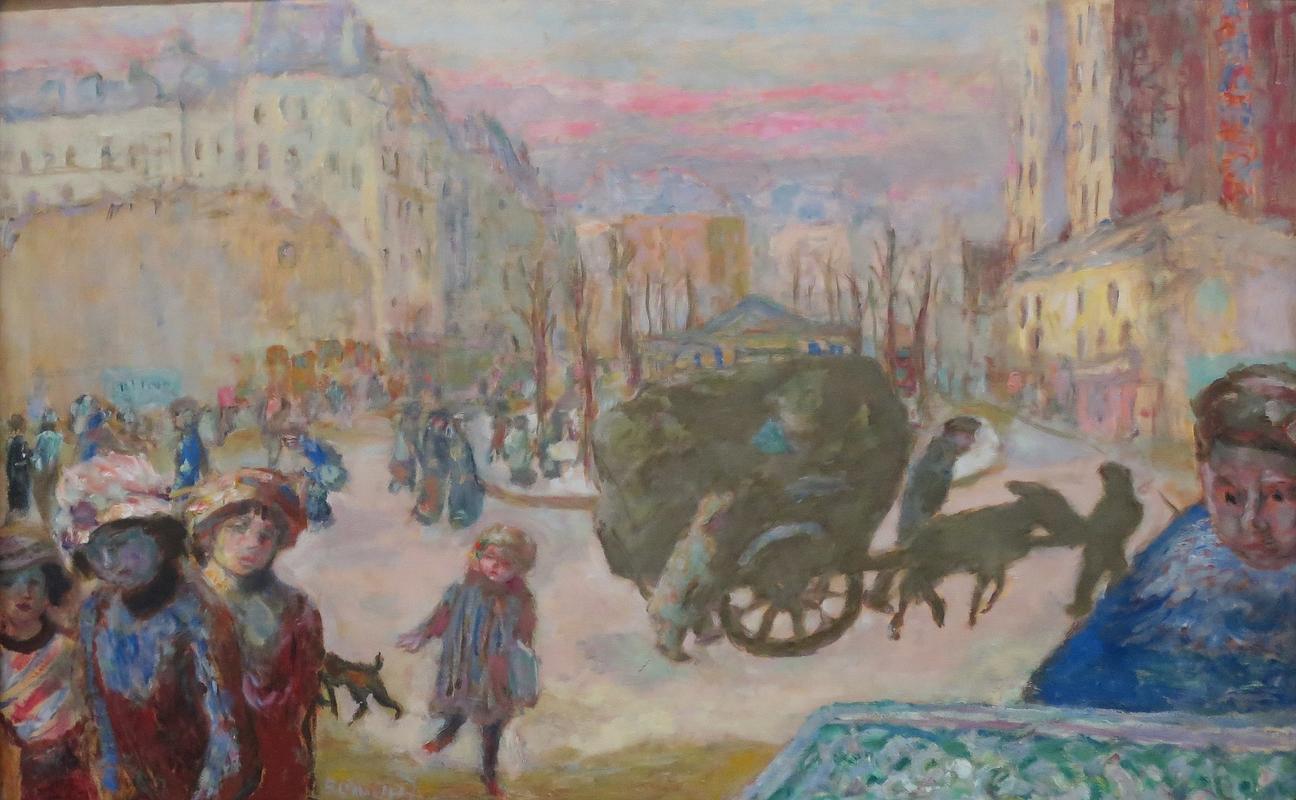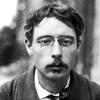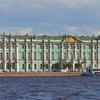More about Morning in Paris

Contributor
In January 1910, Ivan Abramovich Morozov contacted Bonnard through the Bernheim-Jeune gallery with a request for two paintings of Parisian life, of any subject, for 2,500 francs each.
Bonnard was famous for letting lots of time pass as he conjured his marvelous works from memory, so Morozov knew not to rush him. Two years later, the paintings were finished, and Morozov entered them lovingly into his handwritten catalogue. Morozov called this one le Matin (The Morning), and its complement le Soir (The Evening). When WW1 broke out, Le Matin was safe and sound in its owner's collection in Russia. When the Russians went Bolshevik, terrorizing aristocrats, business owners, and religions alike, Morozov volunteered le Matin to make her Russian debut at the Second Museum of New Western Painting in Moscow.
That's the official version, anyway: what really happened is that the Bolsheviks made Morozov an offer he couldn't refuse and "permanently borrowed" his era-shaping collection, installing it in a public museum until they decided, in 1948, that the art wasn't truly revolutionary because it didn't include flat-chested workers or shining images of their dictator, and split the collection between the Hermitage and a storage space in the Pushkin Museum. In 2008, Morozov's great-grandson, Pierre Konowaloff, turned down a ridiculously low government offer of $9,825 for his promise not to make claims on the stolen paintings. From 1923 to 1948, the USSR combined Morozov's collection with that of Sergei Shcukin, and were able to have their Proletarian cake and eat it too, deriving social and PR benefit from displaying works by Pablo Picasso, Henri Matisse and many other big names, which had been collected by unfortunate entrepreneurs ahead of the curve of many Western European museums, only to become the props for opportunistic Soviet dictators. "The situation was unique because both Schukin and Morozov started to collect works of Impressionists, Cezanne, van Gogh, Gaugain [sic] Matisse and Picasso earlier than did French and other public museums, as private collectors often are ahead of the State. In this way the Russian art connoisseurs managed to gather in Russia the most representative works of the best masters." Many Soviet painters called this museum their own personal school, more useful than any classroom instruction behind the "Iron Curtain."
Charles Terrasse, Bonnard's nephew, was able to relive his memories with his uncle by walking around the Paris streets which the great painter had so poetically captured in this canvas. "I like to wander in these streets of Montmartre where I find my childhood, and I also find Bonnard there. Bonnard and my childhood are condensed into one, in my memories...Rue de Douai, Pigalle, le boulevard de Clichy: I walk these routes in the mornings."
Sources
- Akinsha, Konstantin, and Grigorij Kozlov. "Fighting for their Rights." ARTNews, Apr. 1, 2008, https://www.artnews.com/art-news/news/fighting-for-their-rights-196/.
- Barskai︠a︡, A. G., and Evgeniı͡a︡ Georgievskaı͡a︡. Impressionist and post-impressionist paintings in Soviet museums. London: Phaidon, 1985.
- Kostenevich, Albert. Bonnard et les Nabis. New York: Parkstone, 2015.
- Morandi, Luigi, and Charles Terrasse. Pierre Bonnard - palazzo della permanent Milano aprile-maggio 1955. Milano: Silvana Editoriale d'arte, 1955.
- "Pierre Bonnard - le Matin à Paris." Saint-Petersbourg.org, http://saint-petersbourg.org/ermitage/art-français/pierre-bonnard/matin….
- Terrasse, Charles. Bonnard. H. Floury: Paris, 1927.
- "The State Museum of the Modern Western Art." NeWest Museum, http://www.newestmuseum.ru/history/gmnzi/index.php?lang=en.











